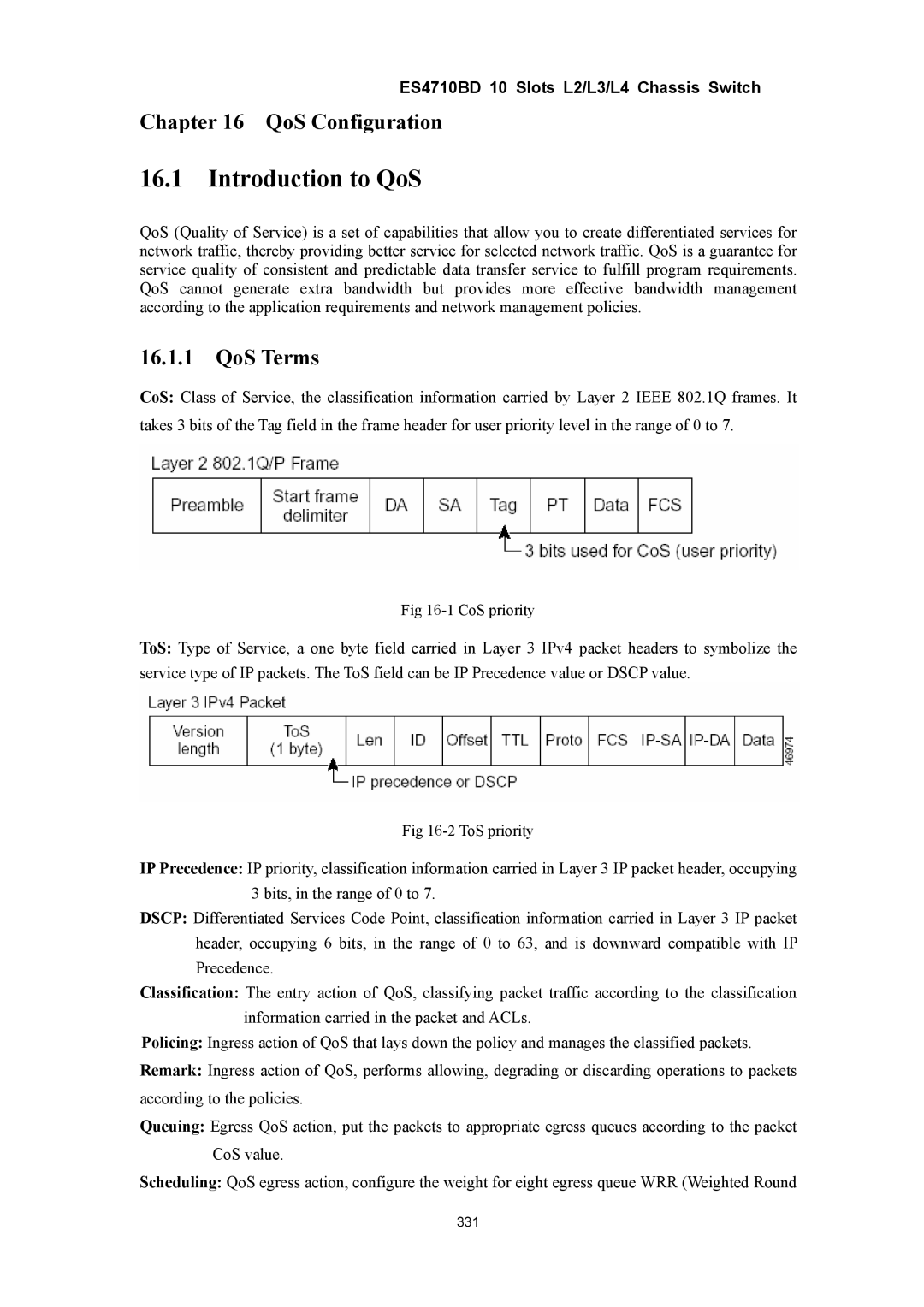
ES4710BD 10 Slots L2/L3/L4 Chassis Switch
Chapter 16 QoS Configuration
16.1Introduction to QoS
QoS (Quality of Service) is a set of capabilities that allow you to create differentiated services for network traffic, thereby providing better service for selected network traffic. QoS is a guarantee for service quality of consistent and predictable data transfer service to fulfill program requirements. QoS cannot generate extra bandwidth but provides more effective bandwidth management according to the application requirements and network management policies.
16.1.1QoS Terms
CoS: Class of Service, the classification information carried by Layer 2 IEEE 802.1Q frames. It takes 3 bits of the Tag field in the frame header for user priority level in the range of 0 to 7.
Fig
ToS: Type of Service, a one byte field carried in Layer 3 IPv4 packet headers to symbolize the service type of IP packets. The ToS field can be IP Precedence value or DSCP value.
Fig
IP Precedence: IP priority, classification information carried in Layer 3 IP packet header, occupying 3 bits, in the range of 0 to 7.
DSCP: Differentiated Services Code Point, classification information carried in Layer 3 IP packet header, occupying 6 bits, in the range of 0 to 63, and is downward compatible with IP Precedence.
Classification: The entry action of QoS, classifying packet traffic according to the classification information carried in the packet and ACLs.
Policing: Ingress action of QoS that lays down the policy and manages the classified packets.
Remark: Ingress action of QoS, performs allowing, degrading or discarding operations to packets according to the policies.
Queuing: Egress QoS action, put the packets to appropriate egress queues according to the packet CoS value.
Scheduling: QoS egress action, configure the weight for eight egress queue WRR (Weighted Round
331
